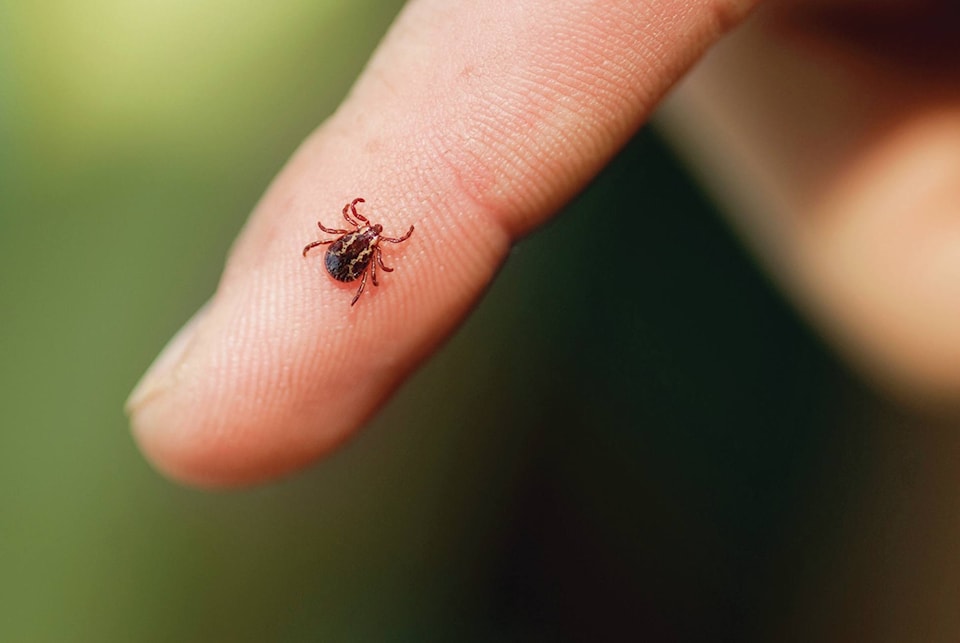As the weather warms, British Columbians will be spending more time outdoors.
Sometimes they may be in tall grass or wooded areas where ticks tend to dwell.
Ticks are small bugs that feed on the blood of humans and animals and can sometimes transmit disease, so covering up before you heading outdoors and checking for ticks on yourself, your children, and your pets after being outdoors, are simple things that go a long way to prevent tick bites.
Ticks are common across Interior Health. The most common tick species in this region is the Wood Tick (Dermacentor andersoni), which is not known to carry the Lyme disease bacteria. The Wood Tick can carry other diseases such as Rocky Mountain spotted fever, although it is very rare. In addition, some ticks also have toxins that can cause tick paralysis, a condition resulting in temporary muscle weakness and paralysis until the tick is removed.
Less than one per cent of Ixodes ticks in B.C. carry Lyme disease. The tick species that carries Lyme disease (Ixodes pacificus or Ixodes angustus) is more common in the coastal areas of B.C., but may also be present in some areas within Interior Health91������Ƶ�s coverage area. In addition to fever, headache, and muscle pain, people infected with Lyme disease will often develop a rash that looks like a 91������Ƶ�bull91������Ƶ�s eye91������Ƶ� target and expands from the site of the tick bite.
If you find a tick on yourself, a family member, or pet, wear gloves and gently remove it. Use needle-nose tweezers to gently grasp the tick close to the skin and pull the tick straight out without squeezing. After removal, clean the area with soap and water. Try to save the tick in a sealed container with a cotton ball soaked in a bit of water and record the date of the bite. If you have concerns or need assistance removing a tick, please contact your family doctor or visit a walk-in medical clinic.
All tick bites should be cleaned, as infection can occur whenever there is a break in the skin. Most tick bites do not result in illness; however, it is important to watch for signs of tick-transmitted illnesses. Signs of many tick-borne infections can be quite similar and include fever, headache, muscle pain, and rash. Anyone who experiences a bulls-eye rash or other symptoms should see a doctor as soon as possible. If you saved the tick, bring it with you to your medical appointment. Ticks that are still alive can be tested for Lyme disease.
Additional precautions people can take to prevent illnesses from tick bites include:
Walking on cleared trails when in tall grass or wooded areas.
Covering up by wearing a hat, long sleeves, and pants.
Wearing light-coloured clothing to help spot ticks easily.
Tucking pant legs into socks or boots.
Applying insect repellent containing DEET on uncovered skin.
Checking clothing and scalp (covered or not) when leaving an area where ticks may live - ask someone to help check hard to reach areas.
Having a shower after returning from areas where ticks may live.
Regularly checking household pets for ticks.
To reduce ticks from entering your home and yard, try these steps:
Keep your lawn short and remove any fallen leaves and weeds.
Keep a buffer area such as wood-chip or gravel border between your lawn and wooded areas or stone walls. Any play equipment or play zones should be kept away from wooded areas.
Trim tree branches to allow more sunlight in your yard.
Keep wood piles and bird feeders away from the house.
Widen and maintain trails on your property.



